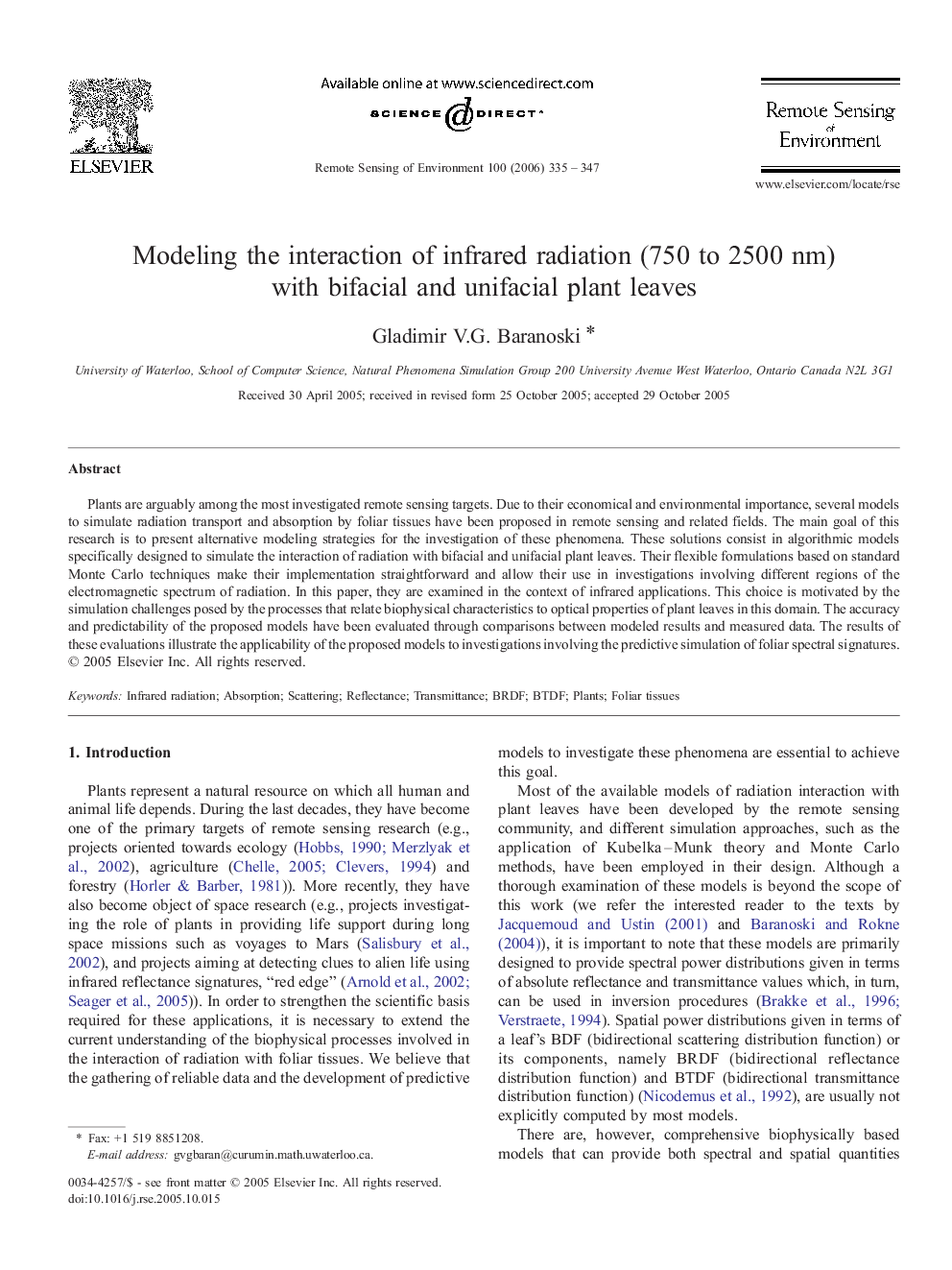| Article ID | Journal | Published Year | Pages | File Type |
|---|---|---|---|---|
| 4461194 | Remote Sensing of Environment | 2006 | 13 Pages |
Plants are arguably among the most investigated remote sensing targets. Due to their economical and environmental importance, several models to simulate radiation transport and absorption by foliar tissues have been proposed in remote sensing and related fields. The main goal of this research is to present alternative modeling strategies for the investigation of these phenomena. These solutions consist in algorithmic models specifically designed to simulate the interaction of radiation with bifacial and unifacial plant leaves. Their flexible formulations based on standard Monte Carlo techniques make their implementation straightforward and allow their use in investigations involving different regions of the electromagnetic spectrum of radiation. In this paper, they are examined in the context of infrared applications. This choice is motivated by the simulation challenges posed by the processes that relate biophysical characteristics to optical properties of plant leaves in this domain. The accuracy and predictability of the proposed models have been evaluated through comparisons between modeled results and measured data. The results of these evaluations illustrate the applicability of the proposed models to investigations involving the predictive simulation of foliar spectral signatures.
